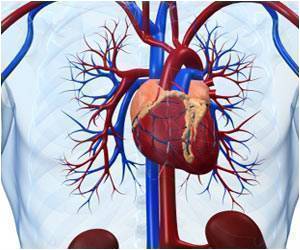Sitting cross-legged is a common posture for many people, but is it detrimental to your health and posture or does it have any health benefits?
- Sitting cross-legged can increase hip misalignment and alter blood flow in the lower limbs, increasing the risk of blood clots
- Crossing at the knees is worse than crossing at the ankles and may produce an increase in blood pressure
- Sitting with the legs crossed for an extended period raises the risk of scoliosis, spinal misalignment, and other deformities
Potential Risks of Sitting Cross-Legged
To begin, studies suggest that sitting cross-legged can increase hip misalignment, with one hip higher than the other. It also alters the rate at which blood travels through the blood arteries in the lower limbs, increasing the risk of blood clots.The majority of evidence suggests that crossing at the knees is worse than crossing at the ankles. Sitting in this position might produce an increase in blood pressure due to blood collecting in the veins and your heart having to battle against this. This increases the danger of blood vessel damage, which is why you should have your feet level on the floor when having your blood pressure taken.
The longer and more frequently you sit cross-legged, the more probable long-term alterations in muscle lengths and bone configurations in your pelvis will occur. Leg crossing can also create spinal and shoulder misalignment owing to the way your skeleton is joined together.
Because the spine compensates to keep your center of gravity above the pelvis, changes in the bones of the neck might cause your head position to get out of alignment.
Your neck may also be harmed if one side of your body is stronger than the other. The same imbalance can be found in the pelvic and lower back muscles as a result of poor posture and the stresses and strains induced by sitting cross-legged.
The pelvis may also become misaligned as a result of continuous stretching of the gluteal (bum) muscles on one side, which causes them to weaken. Sitting with the legs crossed for an extended period raises the risk of scoliosis (abnormal spine alignment) and other deformities. Greater trochanteric pain syndrome, a prevalent and painful condition affecting the outside side of the hip and thigh, can also be caused by it.
Sitting with your legs crossed can also put the peroneal nerve, commonly known as the fibular nerve, in your lower leg in danger of compression and injury, according to research. This usually presents as a weakness when attempting to lift the little-toe side of the foot, as well as the more worrying foot drop, in which the entire foot hangs down. However, in most situations, this is only temporary and returns to normal after a few minutes.
Crossing one's legs may also affect sperm production. This is because the temperature of the testicles must be between 2°C and 6°C below normal body temperature. Sitting raises the temperature of the testicles by 2°C, and crossing your legs raises the temperature of the testes by up to 3.5°C. Furthermore, studies indicate that an increase in the scrotum or testicle temperature can reduce sperm count and quality.
It's also worth noting that because men and women have different anatomy, it's probably easier for women to sit cross-legged - especially because men have a limited range of motion at the hip.
Benefits of Sitting Cross-Legged
But, studies show that sitting with your legs crossed can be good for some people. One tiny study from 2016 discovered, for example, that sitting crossed-legged can help to correct the height of the two sides of the pelvis, increasing alignment in persons who have one leg longer than the other.When compared to sitting with legs forward, sitting with legs crossed appears to diminish the activity of several muscles, particularly the oblique muscles (those beneath the skin where you lay your hands on your hips). This may aid in the relaxation of your core muscles and the prevention of over-exertion.
Similarly, there is evidence that sitting cross-legged promotes sacroiliac joint stability (responsible for transferring weight between the spine and legs).
Sitting in Lotus Position: A Different Perspective
Of course, the most well-known yoga or meditation pose (lotus position) involves people sitting on the floor with their legs crossed. But there is scant evidence that long durations of sitting cross-legged in a chair create some of the concerns that sitting cross-legged in a chair produces. Certainly, yoga has numerous advantages for many people, including those who already have knee problems. So, what's the verdict? It's probably best if you can avoid crossing your legs. Yet, many of the risk factors connected with leg crossing are likely amplified by other underlying conditions such as sedentary lifestyles and obesity. With this in mind, the important piece of advice is to avoid sitting in the same posture for too long and to stay active regularly.Source-Medindia










